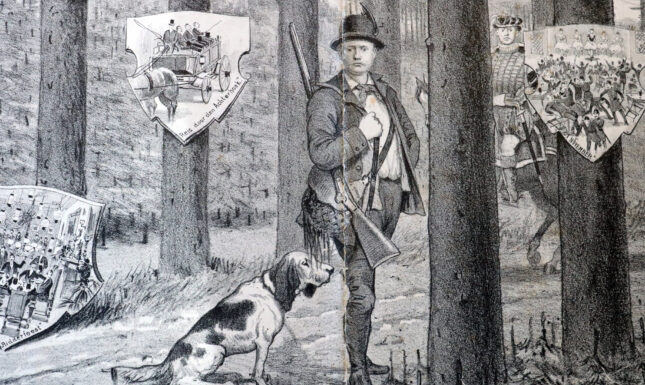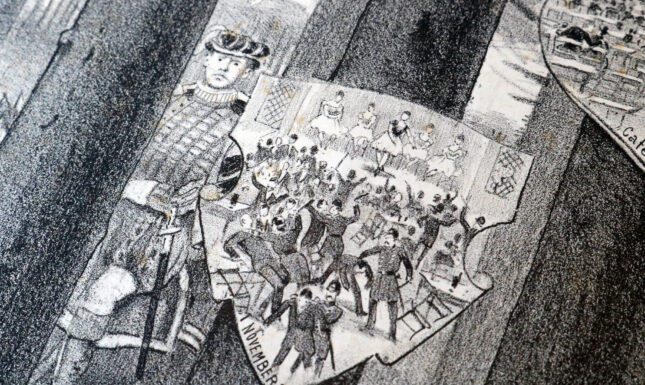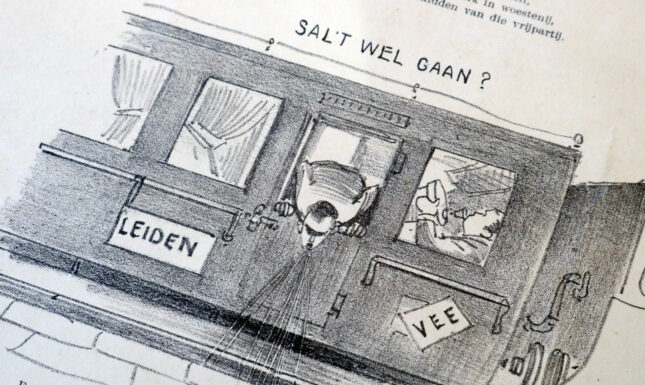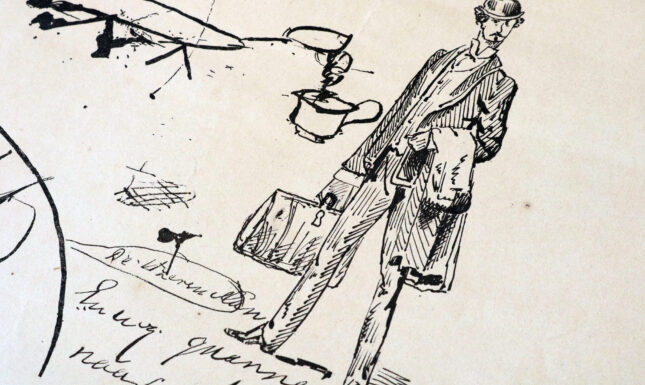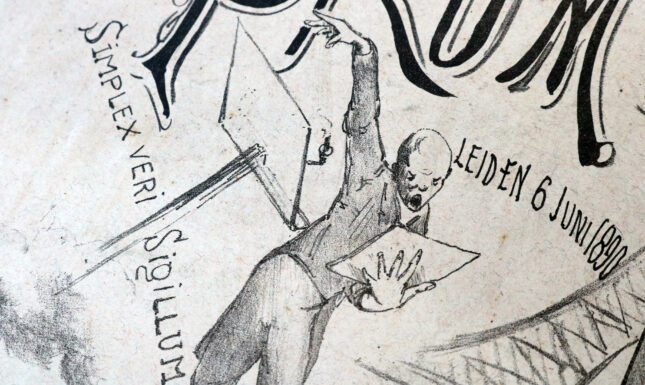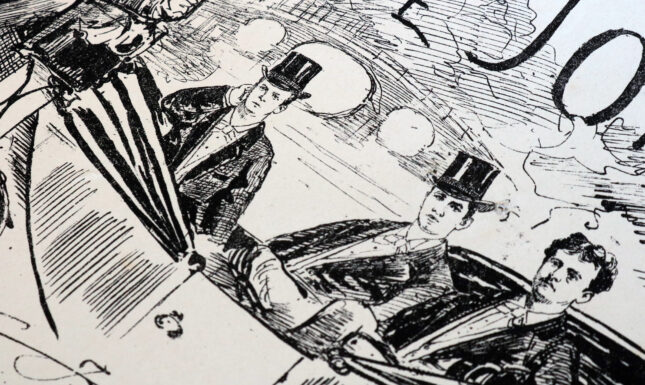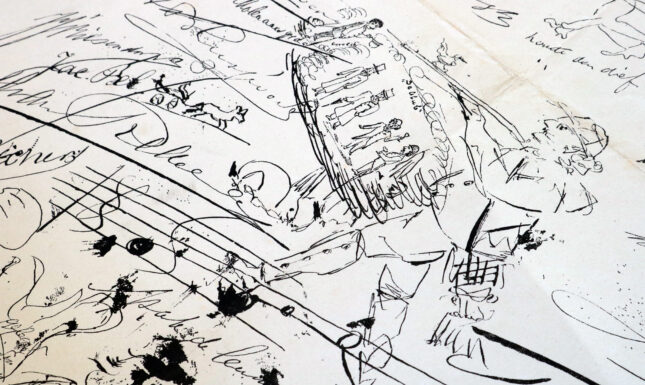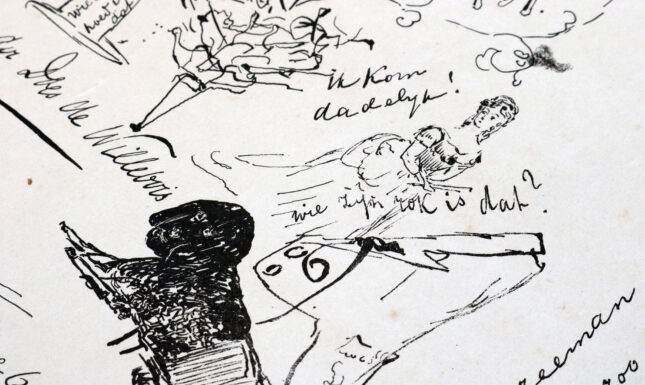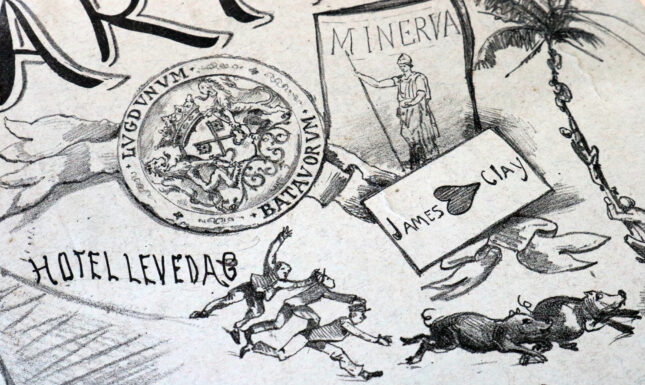Picturing all the talents of the jubilee
When Elisabeth Carolina van Dorp (1872-1945) defended her dissertation in 1903, a special print was made to commemorate the occasion. While this print fits in an older student tradition, it also shows that women were still very much the odd ones out in the male dominated student world.
When Van Dorp started her studies in law in 1897, it was a first for the law faculty. Although it had been 26 years since Aletta Jacobs started her study at Groningen University and 19 years since the first female students were enrolled at the faculty of arts at Leiden University, Van Dorp was the first woman to be enrolled in the Leiden law faculty. The law faculty lagged behind in comparison to the other faculties. Between 1878 and 1897 there had been 70 female students in Leiden: 14 in the medicine faculty, 22 in the science faculty, and 34 in the arts faculty.
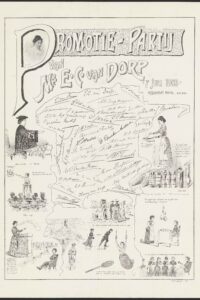

Van Dorp initially enrolled in the Faculty of Arts. In 1893, she started with a study in classics. After a year she switched to Dutch literature and history in which she obtained her candidate’s degree (comparable to a bachelor’s degree) in 1897. She then switched to law, in which she also obtained her candidate’s degree in 1899. Four years later, in July 1903, she would be the second woman in the Netherlands to defend her thesis in law. Just a few months earlier, in April 1903, her fellow student Adolphine Eduardina Kok (1879-1928) had been the first to obtain the doctor’s title.
To mark van Dorp’s freshly obtained title, a special print was made. These prints were quite popular among Dutch students around the turn of the 20th century and Leiden University Libraries now owns a large collection. The prints generally consist of two parts: in the centre are the signatures of friends who were present at the celebration, surrounding the signatures are various scenes depicting the (student) life of the young doctor.
The fact that such a print was also made for Van Dorp indicates that she was an active participant in Leiden’s student life. This is also evident from other sources. In 1900, Van Dorp became the first president of the Vereeniging van Vrouwelijke Studenten te Leiden (Association of Female Students in Leiden), one of the first female members of the student Debating Society, and the first female member of Juris Sacrum, a study society for law students. According to her diary (kept at Atria), she also attended at least one meeting of Humboldt, a study society for science students, of which her brother Gerard was a member.


At the same time, the print also shows that women like Van Dorp were still very much the odd ones out in the male dominated student world. Traditionally, these prints celebrated the student life of the young doctor, depicting the adventures he and his friends had experienced and highlighting the important components of (organized) student life, such as membership of various student clubs and participation in smaller and bigger committees. The print matches in some way the nature of the celebration after the defense of the dissertation. It was not so much a celebration of obtaining the doctor’s title, but rather a last celebration of student life which had now come to an end. Normally it was therefore only celebrated with a group of (close) friends. This was certainly not the case for the celebration for Van Dorp. It was quite a big festivity to which, apart from her friends, various family members and professors were invited, both from the law faculty and the arts faculty.
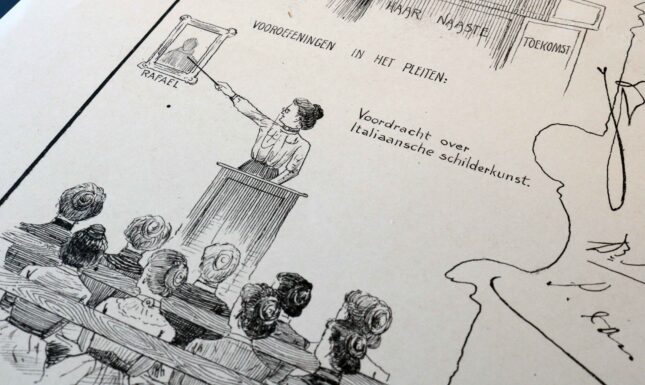

Interestingly enough, the print mostly focuses on Van Dorp’s qualities. Apart from her knowledge of law and her future as a lawyer, the print devotes attention to her great knowledge of languages and her interest in art history and archeology. Next to these academic qualities, her athletic pursuits and her participation in the women’s movement is quite clearly present in the print. Van Dorp’s life as a student, however, is nearly absent. Compared to other prints, made for fellow male students, which are full of (mis)adventures and inside jokes, Van Dorp’s print feels a bit sterile.
Details from the prints of other (male) students (E.B.B. ten Cate, A.B. Cohen Stuart, J.W.T. Cohen Stuart, H.J. Coster, A.C. Crena de Jongh en P.J.M.F. Van der Does de Willebois)
The fact that Van Dorp’s print has this focus on her academic and domestic qualities will surely have stemmed in part from a desire to fight stereotypes. A report of the celebrations in the ‘women’s section’ of De Locomotief, one of the main newspapers in the Dutch East Indies, summarizes the print as ‘listing all the talents of the jubilee, who excels in cooking and knows how to tastefully manufacture her own dresses.’ The print clearly wants to convey that Van Dorp was not a bored housewife, nor a dusty nerd, but certainly also not a ‘mannish’ woman (a fact that multiple reports on her thesis defense emphasize); instead, she is pictured as a smart student, good lawyer, athletic person, and, above all: a modern woman.
About the author
Erik-Jan Dros is a historian with a special interest in book history and the history of Leiden University. He works as a project manager at Leiden University Libraries (view profile).



